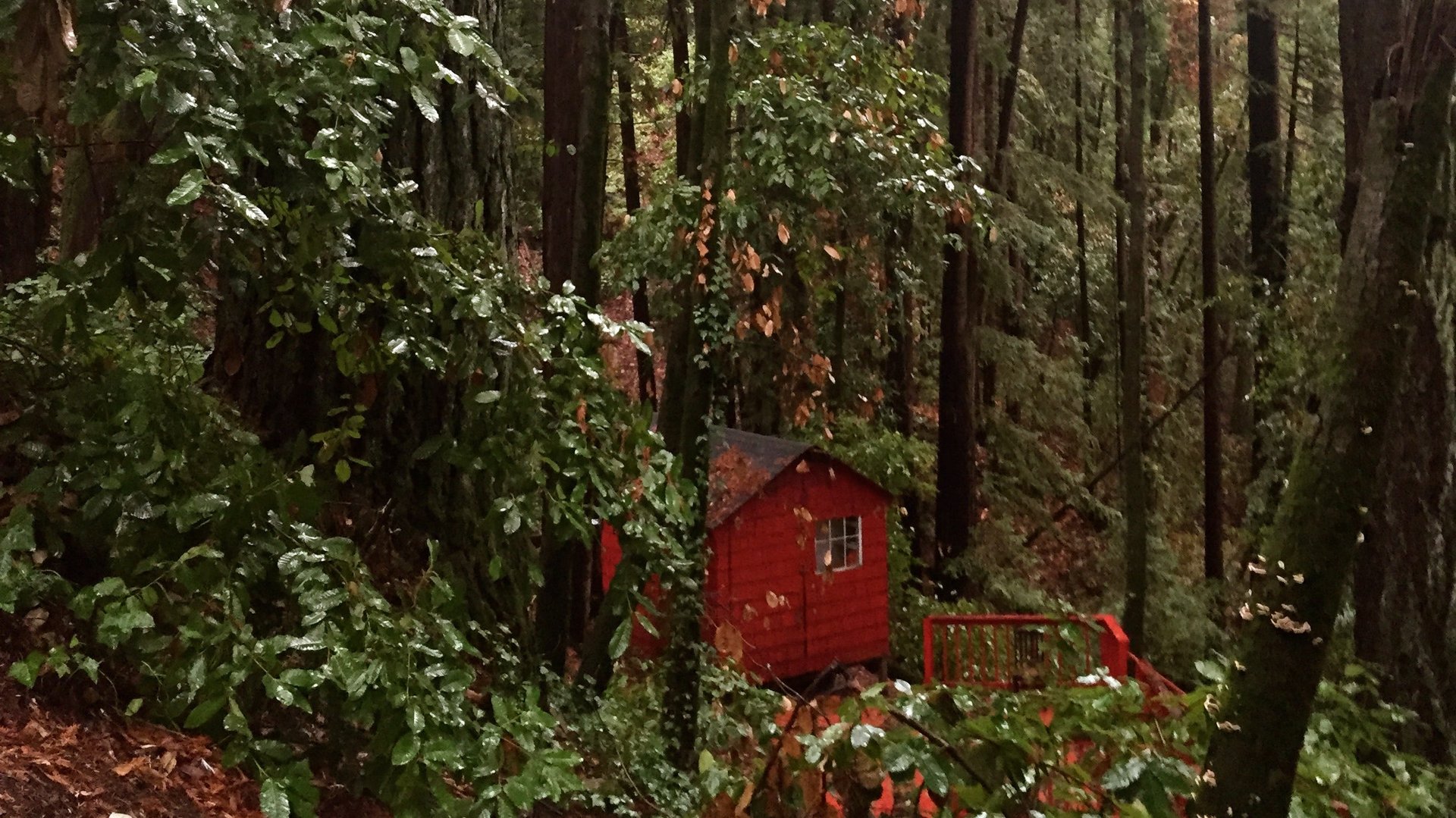Henry David Thoreau was the original hipster minimalist
Americans love stuff. Their passion for acquisition is so intense that even anti-consumerism manifests in materials—talks, tv shows, books, blogs, and documentaries—promoting minimalism.


Americans love stuff. Their passion for acquisition is so intense that even anti-consumerism manifests in materials—talks, tv shows, books, blogs, and documentaries—promoting minimalism.
The tiny house movement, for example, has practically spawned a subgenre unto itself, with cool cats in small spaces explaining their transformation from crap consumers to master minimalists. Outside magazine says that the movement has evolved from “hipster alternative to mainstream phenomenon faster than an Amish barn raising.”
The increased interest in minimalism is no doubt a response to the recent recession, foreclosures, joblessness and underemployment. But experiments with tiny life are not actually that new. The first minimalist hipster may have been the classic American essayist Henry David Thoreau, who, in 1854, released the original tiny life guide, Walden: Or Life in the Woods.
Thoreau had a lot in common with today’s hipsters, beyond beards. For one thing, he was a similarly vociferous minimalist—and also couldn’t help but commodify his less-is-more philosophy, in a typically 2010’s DIY style. He printed his own initial run of Walden, 2,000 copies for a dollar a pop. It sold out quickly, and has since been printed pretty much continuously—by others.
Thoreau’s detailed, forthright, first-person account of his activities and feelings arguably also paved the way for today’s confessional bloggers, both conceptually and stylistically. Back then, however, this type of tell-all had to be explained. As such, Walden’s first chapter—aptly entitled Economy—begins:
When I wrote the following pages, or rather the bulk of them, I lived alone, in the woods, a mile from any neighbor, in a house which I had built myself, on the shore of Walden Pond, in Concord, Massachusetts, and earned my living by the labor of my hands only. I lived there two years and two months. At present I am a sojourner in civilized life again. I should not obtrude my affairs so much on the notice of my readers if very particular inquiries had not been made by my townsmen concerning my mode of life.
Thoreau’s autobiographical approach was thoroughly postmodern. He understood the importance of personal storytelling and the uniqueness of individual experience, writing, “I should not talk so much about myself if there was anybody else whom I knew as well.” That notion was echoed by Hemingway, who journalized his life in fiction almost a century later, and became the motto of American literature: Write what you know.
What Thoreau knew, from observation, experience, work as a reporter, and many long walks before moving to Walden Pond, was that fortune can be a burden. He pitied young people who inherited land, farms, and all the attached clutter: houses, barns, cattle, and tools. “Better if they had been born in the open pasture and suckled by a wolf,” he wrote, “that they might have seen with clearer eyes what field they were called to labor in.”
For Thoreau, freedom meant everything. Valuing time over money, he tried to recalculate the cost of living, describing in detail—down to hinges and screws (14 cents) and nails ($3.90)—the price of his experiment in minimalism. The tiny house took $28.12 to make, total, and lots of personal labor. It had two windows and a door. His advice when it comes to construction: consider just how slight a shelter might suffice, and build no more.
In the woods, Thoreau learned to walk in the dark at night and bathed in the lake every morning, “a religious experience.” He wrote, read, baked bread, planted beans, hosted rare visitors, talked to animals, and marveled at the majesty of trees.
But the Thoreau family was well off from the pencil-making company they owned, and Henry David was criticized as a fake who imitated poverty, doing laundry and taking meals at his mom’s house during the Walden experiment. He’s also been accused of environmental hypocrisy, for the tree destruction caused by the family pencil business—The New Republic published an article entitled “Everybody Hates Henry David Thoreau” in 2015 laying out this and other accusations. That, too, is just like today’s hipsters, who are sometimes called “hipstercrites” for living in fancy, tiny houses, as if there can only be one aesthetic for Americans above the poverty line.
But the critique of Thoreau fails to recognize that he at least tried to test his own limits and the culture’s ideas about living; if he wasn’t privileged, he wouldn’t have known that wealth wasn’t all it’s cracked up to be. Thoreau wasn’t perfect. But he did build a house and live in it, all alone, in the woods, and he documented it, knowing the account would intrigue. It is still influencing Americans today—because in a culture consumed with consumption, those who want stuff, and those who don’t, and those who aren’t sure, are all obsessed with Economy.
Thoreau was simply making a point: when we need a lot, we’re not free. He described it like this, “Making yourself sick, that you may lay up against a sick day, something to be tucked away…safely, in the brick bank.”
Now, 165 years later, Walden is still relevant, precisely because not much has been tucked away in the banks of late (six in 10 Americans don’t have $500 in savings in the bank, according to a new report from Bankrate), and the safety of financial institutions is questionable anyway. They needed a government bailout, after all, just eight years ago.
The story of Thoreau’s experiment is the prototypical guide to the simple life, even if it is written by an imperfect human. Like him, the subset of hipsters living large on little are expanding the definition of the American dream to include less stuff, more freedom—even if their new definition is still constructed relative to the stuff they’re rejecting.